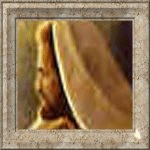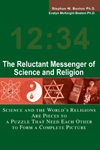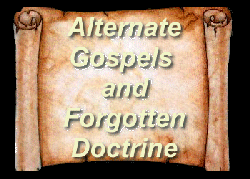
Essenes
The Gospel Of The Holy Twelve
LectionsClick here for The Reluctant Messenger (Host Site)
The Gospel of the Holy Twelve
Also Known as
The Gospel of the Perfect Life
TRANSLATED FROM THE ORIGINAL ARAMAIC
AND EDITED BY THE REV. GIDEON JASPER RICHARD OUSELEY
Introduction
An Irish clergyman, Rev. G. J. Ouseley claims to have discovered the Original Gospel from which the present Four Gospels were derived, which, he says, was "preserved in one of the Buddhist monasteries in Tibet, where it was hidden by some of the Essene Community for safety from the hands of the corrupters, and is now for the first time translated from the Aramaic."
This statement was made by Rev. Ouseley in a preface to his publication of this Gospel, in a book entitled "Gospel of the Holy Twelve." E. F. Udny, in an introduction to this work, writes:
"At the time of the corruption of the Gospels, the Epistles and Revelation' were presumably already in existence, and if the Gospels were tampered with, so no doubt was the rest of the New Testament, which is now equally destitute of the teachings removed from the Gospels. It may well be that uncorrupted copies of the Epistles and Revelation were similarly sent by the Essenes to the safety of a Buddhist monastery, and that, when the world has assimilated to the New Gospel, those, too, may be give us."
Rev. Ouseley claims that he received a transcription Of the Original Gospel from a Buddhist monastery in Tibet where it is preserved. In this documant the teachings of Jesus includes an admonition for his followers to practice the seventh day sabbath, non-violence to all living creatures and the secret to eternal life.
Rev. Ouseley writes:
"The early Christian Fathers did well their work of destroying the sources and records from which they gathered the information and data put by them in the Bible. But they failed to destroy it all. Some escaped, and as it is discovered here and there by patient research workers, it is astonishing to see how the world has been deceived by the Christian Fathers."The Original Gospel is preserved in one of the Buddhist monasteries in Tibet, and is written in Aramaic. These 'correctors' (men authorized to 'correct' the text of Scripture in the interests of what was considered orthodoxy) cut out of the Gospels with minute care certain teachings of Our Lord's which they did not propose to 'follow, namely, those against flesh eating, such as accounts of our Lord's interference, on several occasions, to save animals from ill treatment, and even the interesting and important teachings ever prominent in Eastern scriptures."
We have referred elsewhere to the "correctors" who were hired by the Church Fathers at the Council of Nicea to alter the original text of the Gospels, leaving out those doctrines that were obnoxious to their emperor, Constantine, whom they desired to convert to Christianity, which he opposed. Chief among these objectionable doctrines were the prohibition against the use of flesh meat and alcohol, and the recommendation of kindness to animals, all of which constituted the fundamental doctrines of the teachings of Christ. On this point Udny writes: "The great significance of the corruption of the Text lies rather in the nature of the matter struct out by the 'correctors' than in the amount. It is evident that the 'correctors' and those who appointed them were at least unwilling to denounce their beef and beer, a convenient alliteration for flesh and alcohol."
In the original Sanscrit and Aramaic gospel, the duty of abstaining from meat and wine were emphasized, while in the later versions, it was omitted. Since those who founded the Christian Church, like their emperor, Constantine, were meat eaters and drinkers of wine, naturally they were opposed to these doctrines, whose acceptance would involve a revolutionary transformation of their living habits, they interpreted the first promise to mean, "Thou shalt not kill". implying that the commandment applied only to humans and that the slaughter of animals was not killing.
The Original Gospel, representing the teachings of Christ, the Lord of Love, taught harmlessness and compassion to all living beings, including both animals and humans. For reasons above stated, the Roman Churchmen at Nicea opposed these doctrines and eliminated them from the Gospels, which they radically changed so as to be acceptable to Constantine, who loved the red meats and flowing wine of his midnight feasts too much to accept a religion that prohibited these pleasures, which was a main reason why he so bitterly persecuted the early Christians who advocated these doctrines. For this reason the Church Fathers changed the Gospel in such a way that Love and Compassion were limited only to human beings but the animal expressions of life were excluded from receiving these benefits. But the savior of the Original Gospel, as Christ were represented to be, was a redeemer of the animal world, as he was of men, seeking to alleviate the sufferings of all living beings.
"The all pitying love of Our Savior embraces not only mankind, but also the so-called lower creatures of God, sharers with us of the one breath of life, and with us on the road of ascent to that which is higher. Never has the providence with which the All-Merciful watches over man and beast alike been more impressively brought home to us than in the saying of the Savior, 'Are not five sparrows sold for two farthings, but not one of them is forgotten by God'. How were it possible to doubt that the Savior would have pity and compassion on the creatures who must bear their pain in silence? Would it not seem a blasphemy if it were said that He would behold without pity or succor the ill-treatment of helpless animals? Nay, rather, when he brought redemption to a world sunk in selfishness, hard heartedness and misery, and proclaimed the gospel of all embracing love, there was a share in this redemption for all suffering creatures; since when man opened his heart to the divine love, there could be no room left in it for pitiless hardness toward the other creatures of God, who have, like himself, been called into life with a capacity for enjoyment and suffering.
'Those who bear the mark of the Redeemer practice His all pitying love; and how little it is that the minimum of compassion for helpless creatures demand of us; Only not to inflict on them torture; to help them when they are in trouble, or when they appeal to us for succor, and if of necessity we take their life, to let it be a speedy death with the least pain-a gentle sleep. But, alas, how little we are penetrated with these divine lessons of mercy and compassion. How many grievous tortures are inflicted on them, under the pretense of science, or to gratify an unnatural appetite, or cruel lusts, or the promptings of vanity!"
We shall now present the Original Gospel claimed by Rev. Ouseley to have been preserved since the early centuries of our era in a Buddhist monastery in Tibet, which expounds the doctrines of Christ on universal compassion, vegetarianism and kindness to animals (involving abolition of animal sacrifices). Of which teachings the barbarous practice of animal sacrifices, which was recommended by the Old Testament, a book accepted as holy and divinely inspired by both the Jews and Christians, was abolished and rejected by the New Christian Church, so that it never played a part in Christianity as it did in original Judaism.
After the Council of Nicea, when this gospel was changed to suit Constantine, as well as converted into Four Gospels, "Jesus Christ" while his humane, vegetarian and pacifistic doctrines were largely eliminated and replaced by a false supernaturalism.
Rev. G. J. Ouseley
In 1881 an English minister, Rev. G. J. Ouseley, got hold of a hitherto unknown, not rewritten evangelical text. This uncorrupted text has century after century been secured from all falsification in a buddistic monastary in Tibet, since the day a man has hidden it there, an man of the Essene society. Ouseley translated the Aramaic text and gave it the name The Gospel of the Holy Twelve. It has later been translated into German.
During the last century also many old fragments of the gospel have come into light. Some of them have been found in old libraries and other from excavations. These fragments are called Logins or Agraphas. They a older than and more original than the canonized gospels. Their great value is due to the fact that they are uncorrupted. The curious thing is, however, that many parts of these fragments mostly agree, word for word, with the Gospel of Ouseley, though they are completely missing in the canonical gospels.
The Hungarian physician, Prof. Edmond Szekely, found some ten years ago a evangelical text in the royal library in Wien, written in old Slavonian language; he copied it. Later he found the original to the old Slavonian translation in the Vatican library. The original, that was translated into the Slavonian language, was written in Aramaic, Szekely in 1937 published the parts which deal with the health of the human body, about 1/8th of the text. His pamphlet was published in German under the name of Heliand.
END
Begin Here
Introduction | Complete Index 01 thru 96
01 thru 10 | 11 thru 20 | 21 thru 30 | 31 thru 40 | 41 thru 50
51 thru 60 | 61 thru 70 | 71 thru 80 | 81 thru 89 | 90 thru 96

Gospel of the Holy Twelve
$3.99 Kindle eBook

Buy from Amazon.com

